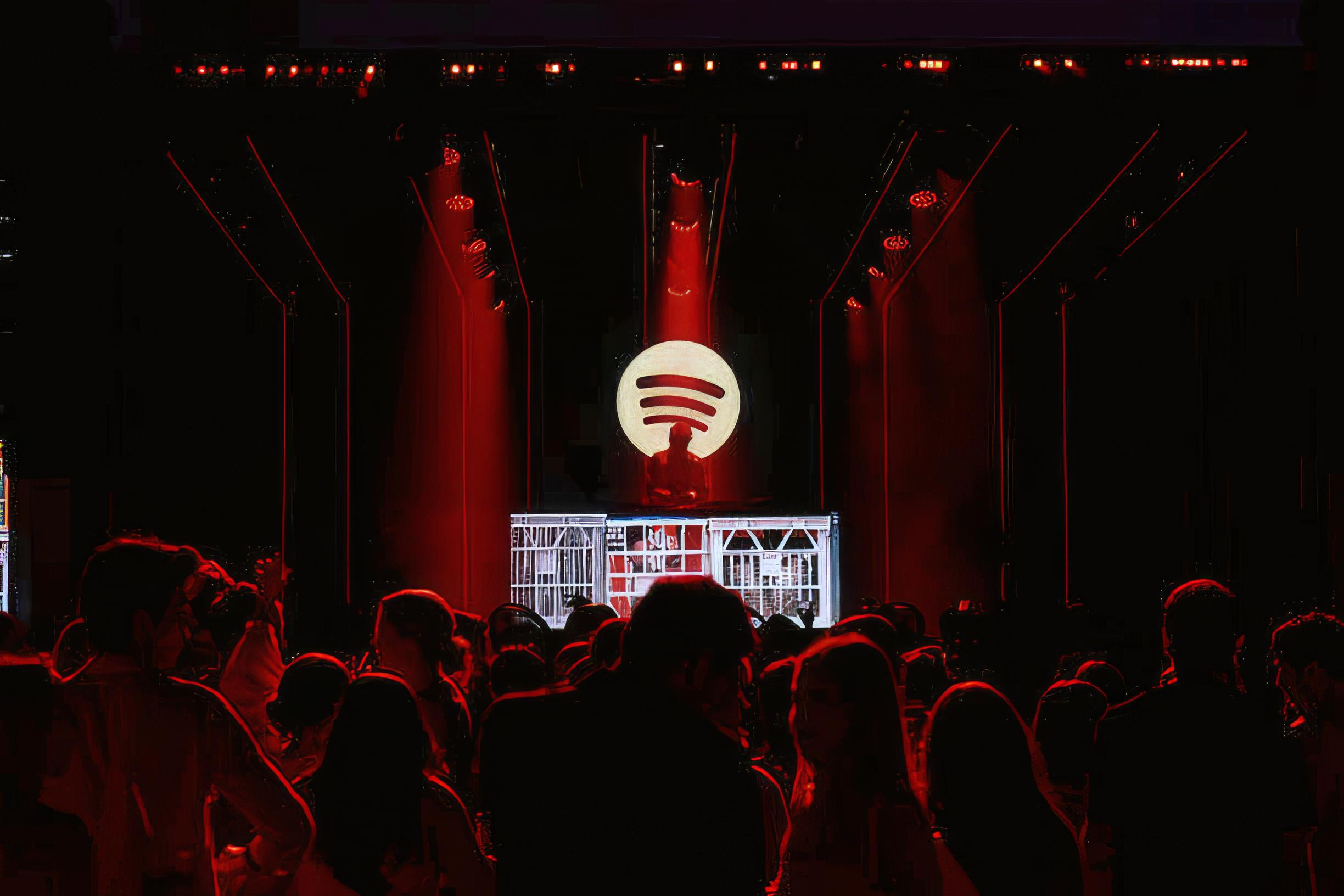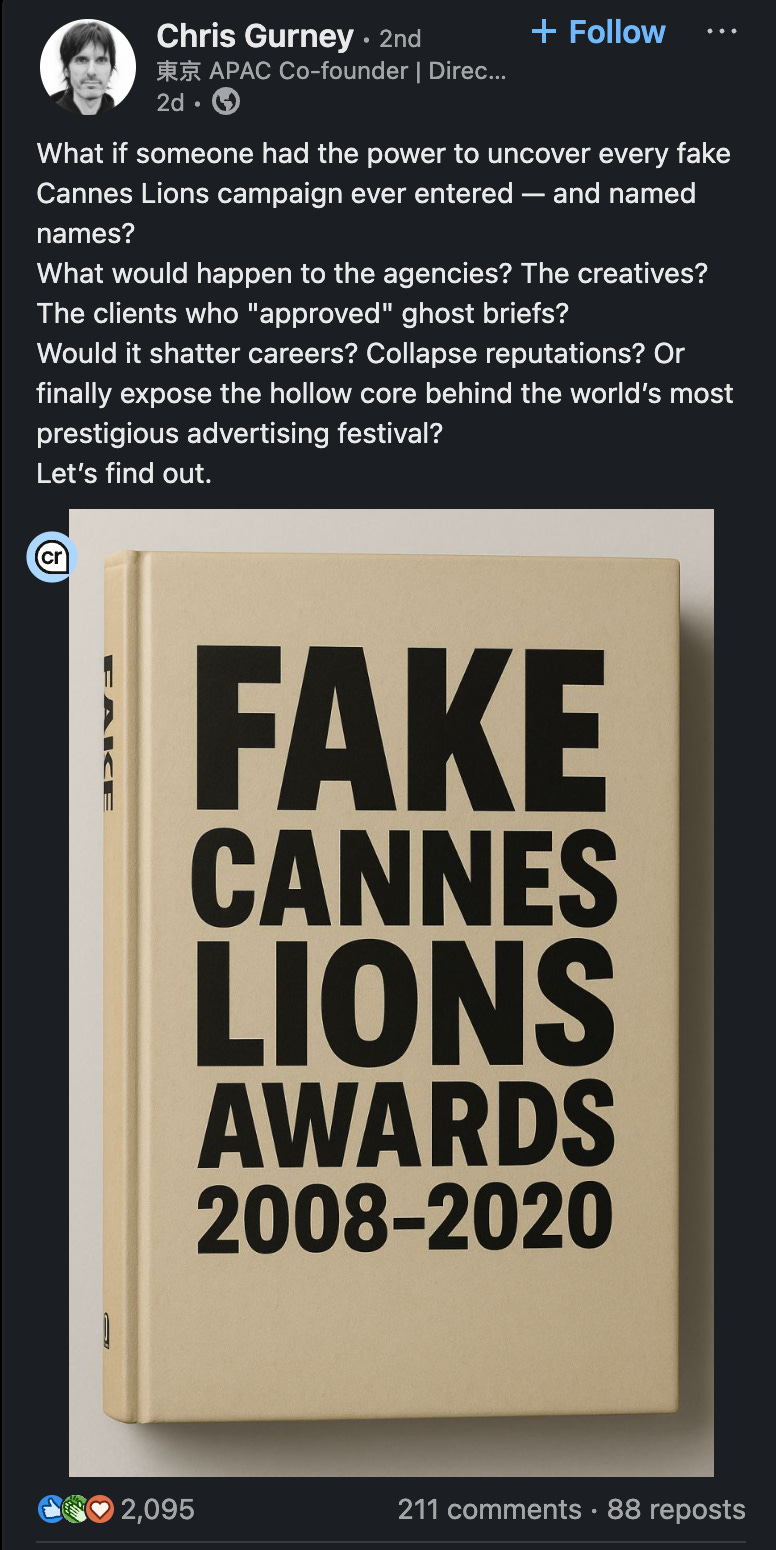Welcome back to the boring old U.S. Seems like a bit of a mess was made across the pond. Should we talk?

I cannot speak to the authenticity of anything listed in the above thread. And I’m unaware of the news sources used. But since we’re not the New York Time, let’s have a look, shall we?

One minute the agency folks are clinking rosé at Cannes, the next Meta, Google, Amazon and Comcast are rolling in like a squad of Terminators, promising ads faster, cheaper and supposedly better than anything a human creative director can cook up. The Wall Street Journal says the giants’ new AI ad arsenals have already shaved billions off holding-company market caps. Ouch.
wsj.com
Mark Zuckerberg’s crew wants to turn ad making into a Costco run: upload a product shot, type a budget, walk out with a ready-to-blast campaign. No brainstorms, no late-night pizza, just Llama-powered copy, images and targeting in one click. PRWeek notes agency investors already flinched stocks of WPP, Omnicom and IPG dipped 3-4 % the day Meta’s roadmap leaked. Cue the laugh track, but it’s the kind that trails off into awkward silence. prweek.com ainvest.com

Barclays analysts recently slapped the big ad groups with a “slow-growth” label, saying AI will squeeze margins and unravel the bill-by-the-hour model. Sure, agencies have survived radio, TV and the banner-ad apocalypse, but this time, the machines write the headlines and buy the media.
The mood is pure doom-scroll. wsj.com
Over in Seattle, Amazon’s AI Video Generator spits out 21-second “studio-quality” spots in minutes. Sellers who once begged cousins to juggle iPhones for B-roll now get Dolby-esque footage at the cost of a cup of drip coffee. Amazon’s own blog calls it “democratizing” creativity; agency producers call it “Tuesday unemployment.” The kicker? It’s free. At least until everyone’s hooked and the Prime price hike hits.
Get started with Video Generator, available in the Amazon Ads console
advertising.amazon.com marketingdive.com

Google has mashed every acronym: DSA, P-Max, broad match, into Search Max, a black-box campaign type that promises 14 % more conversions without lifting your finger.
Translation: the AI decides copy, images, bids basically everything agencies used to invoice for. Somewhere a media-planner’s Gantt chart is quietly sobbing. British regulators are even poking at Google’s dominance, hinting the whole thing might need an oil change before the antitrust tow truck arrives. campaignme.com
Not to be left out, Comcast’s ad arm partnered with Waymark so even Mom-and-Pop Pizza can whip up a 30-second TV spot faster than it takes to burn the crust. The platform promises “premium inventory” plus push-button creative—no agency markup, no frantic midnight edits.
What’s next for broadcast standards? You just click the approved-for-all-audiences box? businesswire.comtecknexus.com
At Cannes, chiefs from Publicis to VCCP insisted human originality will always win. Forbes captured the pep-talk: “Clients expect AI fluency, but big ideas still come from people.” Great. So creatives get to be prompt engineers and therapists for worried CMOs. Meanwhile the AI tools pump out infinite A/B/C/D/E variants before the agency finishes its first mood board. forbes.com

So here we are: tech titans wielding trillion-parameter hammers, agency castles shaking like Jell-O in an earthquake, and investors trading holding-company shares like they’re cursed memorabilia on Antiques Roadshow. The laughter sounds a little nervous now, because the doom scenario isn’t a meteor years away. It’s an 18-month product roadmap with a beta link.
We used to complain about banner ads. Now the banners write, shoot and star in their own reality show and they want your job. Tomorrow’s brief might read: “Suggest a lo-fi, high-ROI campaign.”
Those that pivot to strategy, ethics policing, and brand soul-keeping may dodge extinction. But the cushy middlemen era? They’re headed for the museum, right between the fax machine and the AE who mailed VHS dubs. The rest of us? We’ll be here, popcorn in hand, watching a stand-up routine where the punchlines are written by algorithms and the audience is trying not to notice the exit signs flickering.
… every seller from basement drop-shippers to Fortune-50 brands can now churn out dozen after dozen of glossy, 21-second commercials—each one auto-cut, scored, and polished by algorithms that never sleep.
The tool, rolled out to all U.S. sellers this month and still completely free, promises “studio-quality” work in under five minutes. But behind the triumphant press release lies a bleak future for anyone who once relied on craftsmanship, differentiation, or even a fighting chance on the crowded Amazon shelves. (advertising.amazon.com, theverge.com

Early tests show sellers pumping out six AI-built variations per product—then cycling new batches with every price tweak or seasonal keyword.
The result?
A torrent of shiny but interchangeable ads, all narrated by the same cheerfully synthetic voice and underscored by identical royalty-free ukulele tracks. When everything looks “premium,” nothing stands out. Consumers drown in an endless scroll of saccharine micro-commercials that blur together like a migraine-inducing kaleidoscope. Amazon calls it “democratizing creativity”; rival merchants call it armageddon for organic reach. (semafor.com, aboutamazon.com)

Before this tool, producing video ads required cash, time, and at least a ring-light. Now the production cost is effectively zero. That sounds like a win—until you realize barriers to entry are what kept the noise floor tolerable. Removing them sets off an acceleration spiral:
-
More sellers advertise because they finally can.
-
Ad inventory clogs faster than Amazon’s recommendation engine can jam clips into every pixel of Prime Video, Fire TV and Twitch.
-
Bids soar as thousands of near-identical toothbrush listings fight for a millisecond of autoplay.
-
Margins collapse because the only lever left is lowering price—or paying Amazon even more for premium placement.
The platform wins twice over: first by pocketing higher cost per click’s, then by squeezing sellers to subsidize the very ad deluge that’s drowning them.
Amazon touts “photorealistic motion,” “multi-scene shots,” and human actors who don’t live at the craft services table. But these spot-in-a-box templates are, by design, template-driven, optimized to convert clicks, not spark delight. We’re witnessing the industrialization of taste:
-
Color grading converges on algorithm-approved palettes.
-
Narrative beats shrink to three: close-up, lifestyle demo, price flash.
-
Music cues fade in at the same timestamp because that’s where the model says dopamine spikes.
In other words, every product film now looks like a suburban model home—impeccably staged, totally soulless, and indistinguishable from the one next door. It’s advertising’s uncanny valley, at scale.
(adexchanger.com)

-
Indie labels erased: The few Direct to Consumer outfits that relied on quirky story arcs or handmade cinematography will be buried beneath algorithmic gloss they can’t out-spend or out-target. Indie agencies are touting the wonderfully quirky human touch will be drowned by the AI firehose of ad sh*t.
-
Production crews sidelined: Freelance animators, editors, even junior copywriters discover their bookings evaporate overnight, replaced by a prompt that says “Add playful tagline about pet safety.”
-
Consumer attention atomized: The average Prime member already sees 3,000 marketing messages per day. This tool pours a tanker truck of branded sludge into that torrent, turning shopping into a sensory punishment.
Amazon’s answer? More AI, of course. Sentiment filters to “optimize fatigue levels” so the ads can keep hitting just shy of rage-quit. Gloomy enough yet?
(semafor.com)
Every clip created feeds fresh engagement stats back into Amazon’s learning loops: watch-through rates, hover times, micro-gestures on Fire remote scrubbing. That granular telemetry tilts auctions toward the highest-scoring template—usually the one that sparks impulse buys, regardless of long-term satisfaction. Sellers effectively train the algorithm that will undercut them tomorrow. Consumers, meanwhile, pay in privacy; each thumb-stop is another breadcrumb for predictive pricing models. In the gloom-and-doom ledger, that’s a double debit.

Generative video isn’t free to the planet. The GPU farms cranking out synthetic parallax and perfectly pouring orange juice guzzle electricity at industrial scale. Multiply that by millions of SKUs, each spawning half a dozen variations, and Amazon’s “free” tool quietly writes a carbon IOU future generations will struggle to repay. Yet sustainability barely merits a bullet point in the launch blog. The message: cheaper CPMs today, warmer oceans tomorrow—Prime delivery guaranteed.
As attention scarcity worsens, two dystopias loom:
-
Adware Everywhere
Smart fridges autoplay detergent promos on the door display; Kindle pages insert video loops between paragraphs; Alexa “reminds” you about flash deals using the very clips sellers just churned out. Opt-out buttons migrate deeper into settings until surrender looks simpler. -
Algorithmic Darwinism
Survival hinges on who can weaponize personal data faster. Sellers will feed first-party purchase histories into prompt recipes.“Generate video that targets 32-year-old left-handed marathoners who own rescue dogs.” Shoppers thought retargeting banners were creepy? Wait until their entire living-room screen fills with a deepfake athlete doppelgänger lacing the exact shoe model they scrolled past at 2 a.m.
In both scenarios, human creativity fades to a novelty act—brought out only for Super Bowl Sunday or luxury launches where actual directors still rate an invitation.
-
Niche hard, niche weird: If your brand can’t out-spend, out-weird. Hand-drawn animation or low-fi puppetry might jolt viewers awake until the generator learns that trick, too.
-
Own your channels: Every click that routes through Amazon’s ad stack strengthens its chokehold. Cultivate off-platform communities before the algorithm walls get higher.
-
Demand responsible defaults: Ask Amazon for carbon-impact labels on generated ads and limits on daily viewer frequency. If regulators won’t step in, public pressure must.

Amazon’s scaled AI Video Generator is more than a creative shortcut; it’s a conveyor belt moving the industry toward total commodification of persuasion. Sellers who adopt it enter an arms race they can’t win, because the house powered by limitless cloud GPUs and black-box bidding, always wins. Consumers brace for an assault of hyper-polished sameness. The planet foots the power bill. And the last flicker of artisanal storytelling? It’s fading like yesterday’s lightning deal. Sold out, no back-orders.
Enjoy the view while you can; soon every 21 seconds will look exactly the same.
-
Please forward this to three friends, enemies, colleagues, or someone you met today.
-
Like and Re-stack it below so others can find it!
-
Drop a comment below. If you’re into it, if it sucks … perhaps drop a Haiku about programmatic AI. Your call.
